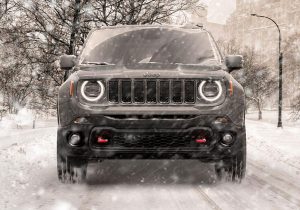 If you’re hitting the roads in Oklahoma this winter, it’s important to remember that severe weather can strike at any time. To make sure you get wherever you need to go, here are some safety tips that can help keep you safe when you’re driving on snowy or icy roads this winter.
If you’re hitting the roads in Oklahoma this winter, it’s important to remember that severe weather can strike at any time. To make sure you get wherever you need to go, here are some safety tips that can help keep you safe when you’re driving on snowy or icy roads this winter.
Take it Slow
One of the most important things to remember about winter driving in Oklahoma is that you need to drive slowly to account for the lower traction you’ll have on snow and ice. Watch the flow of traffic so you can anticipate when you’ll need to stop and take time to slow down. When you’re ready to accelerate again, do it gently so you can regain traction and avoid sliding. Since you’ll need to drive slower than usual, make sure you leave ample time to get to your destination.
Increase Your Following Distance
Since you need more distance to slow down on slick roads, you want to increase your following distance to at least three to five car lengths. This increased space will give you the longer distance you need when you have to stop. It’s also important to stay at least 200 feet behind snowplows. Plus, since snowplows can create a lot of blowing snow that severely restricts visibility, you should never attempt to pass them when you’re on the road.
Watch for Ice
Ice is one of the most dangerous parts of winter roads. The Federal Highway Administration estimates that every year over 150,000 accidents are the result of icy road conditions. Black ice is particularly hard to see because it freezes so clear it looks like water. If you’re driving down the road and your vehicle suddenly starts to slide on ice, don’t hit your brakes. Instead, take your foot off of the accelerator and gently turn into the skid. Once you’re out of the skid, you can bring the steering wheel back to the direction you want to go.
Check Your Tire Pressure Once a Week
Every time the temperature outside goes down 10 degrees, the air pressure inside your tires will also decrease around one or two PSI. Under-inflated tires can skid more easily on wet pavement, require more stopping time, can lower your gas mileage, and decrease the lifespan of the tires. To make sure you’re not driving around on dangerously under-inflated tires, you should check the pressure once a week.
Keep an Emergency Kit in Your Vehicle
No matter how much driving you plan on doing this winter, you should keep an emergency kit in your vehicle. Your emergency kit should include a blanket, warm clothes, gloves, ice scraper, shovel, flashlight with extra batteries, jumper cables, sand or cat litter, water, non-perishable food, a first aid kit, and triangles or flares to warn other vehicles. If you get stranded, call for help and stay in your vehicle until assistance arrives.
This winter, you’ll be able to confidently navigate the roads around Oklahoma when you keep these important safety tips in mind.
Image via jeep.com








